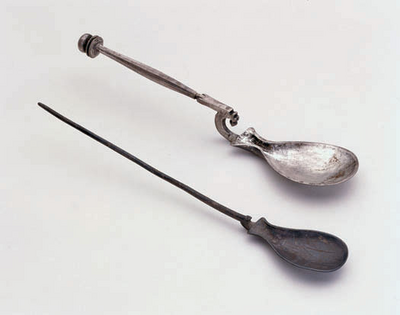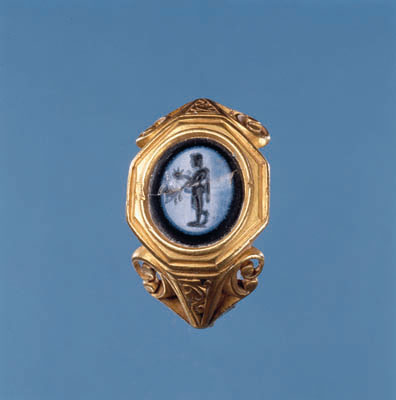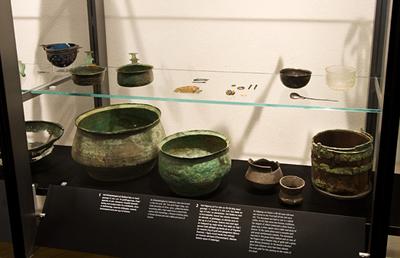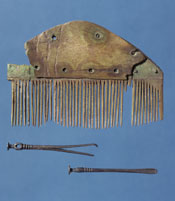A lucky gold ring?
The grave from Årslev is certainly not the only richly furnished grave from the Late Roman Iron Age in Denmark. Another noteworthy find is the man’s grave from Hågerup on Funen which was excavated in 1931. The man from Hågerup had been given abundant grave goods, including a drinking service and personal items. He must have belonged to the same social class as the woman from Årslev. One of the things he had been given is a Roman finger ring of gold with an intaglio gem. This gem was decorated with a carved image of a god holding a bowl in one hand and an ear of corn in the other. This divinity, ‘Bonus Eventus’, was worshipped by the Romans as the source of good fortune and prosperity. Perhaps the buried man knew about the symbolism of the ring? This was not a popular type of jewellery among the Nordic peoples. They preferred locally made gold jewellery. However, they did appreciate the gold. In the oldest stratum of the city of Ribe from the 700s scrapped gems from rings have been found. These may originate from plundered Roman graves – possibly the catacombs in Rome.




